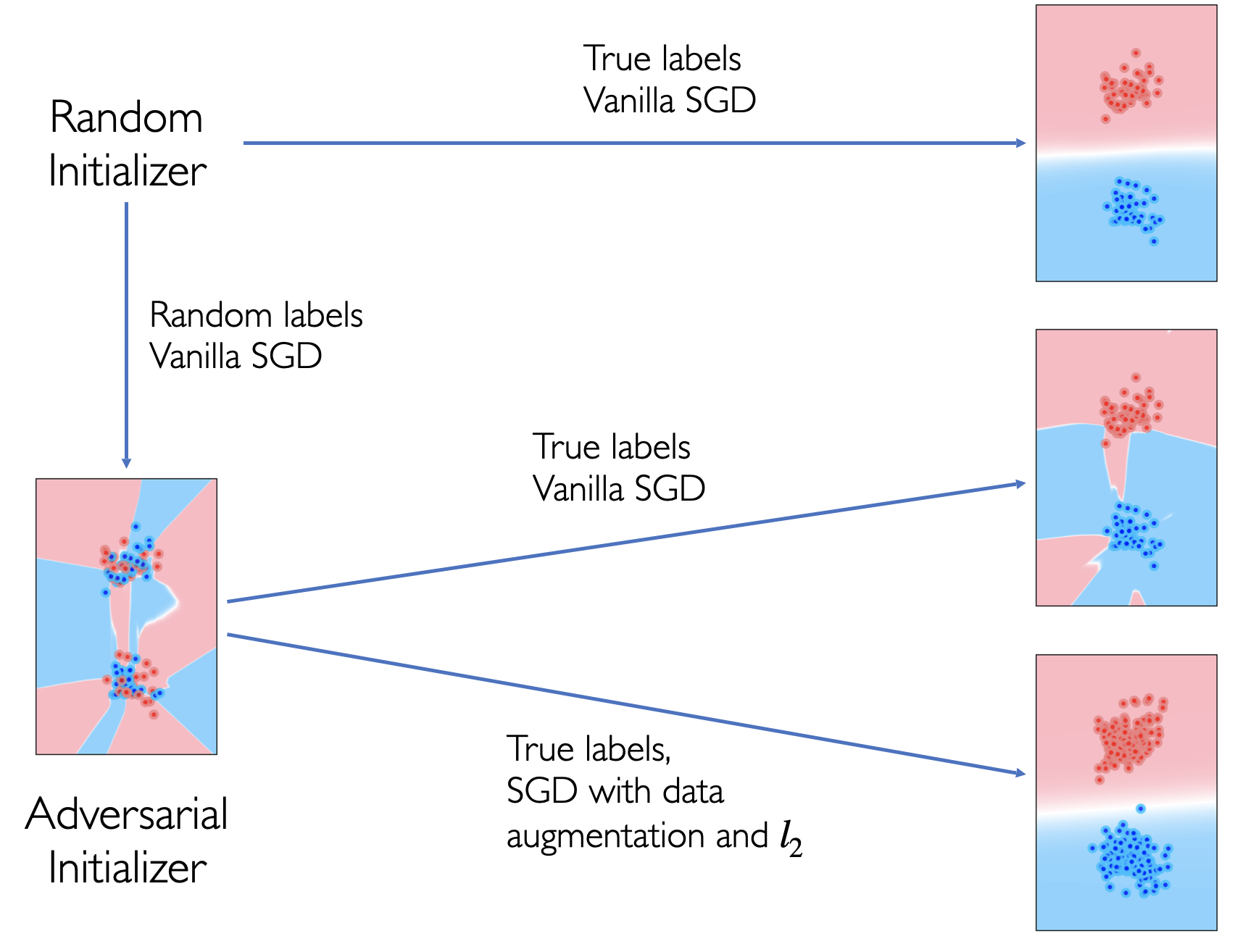Bad Global Minima Exist and SGD Can Reach Them
Several works have aimed to explain why overparameterized neural networks generalize well when trained by Stochastic Gradient Descent (SGD). The consensus explanation that has emerged credits the randomized nature of SGD for the bias of the training process towards low-complexity models and, thus, for implicit regularization. We take a careful look at this explanation in the context of image classification with common deep neural network architectures. We find that if we do not regularize \emph{explicitly}, then SGD can be easily made to converge to poorly-generalizing, high-complexity models: all it takes is to first train on a random labeling on the data, before switching to properly training with the correct labels. In contrast, we find that in the presence of explicit regularization, pretraining with random labels has no detrimental effect on SGD. We believe that our results give evidence that explicit regularization plays a far more important role in the success of overparameterized neural networks than what has been understood until now. Specifically, by penalizing complicated models independently of their fit to the data, regularization affects training dynamics also far away from optima, making simple models that fit the data well discoverable by local methods, such as SGD.
PDF Abstract NeurIPS 2020 PDF NeurIPS 2020 Abstract



 CIFAR-10
CIFAR-10
 CIFAR-100
CIFAR-100
 CINIC-10
CINIC-10